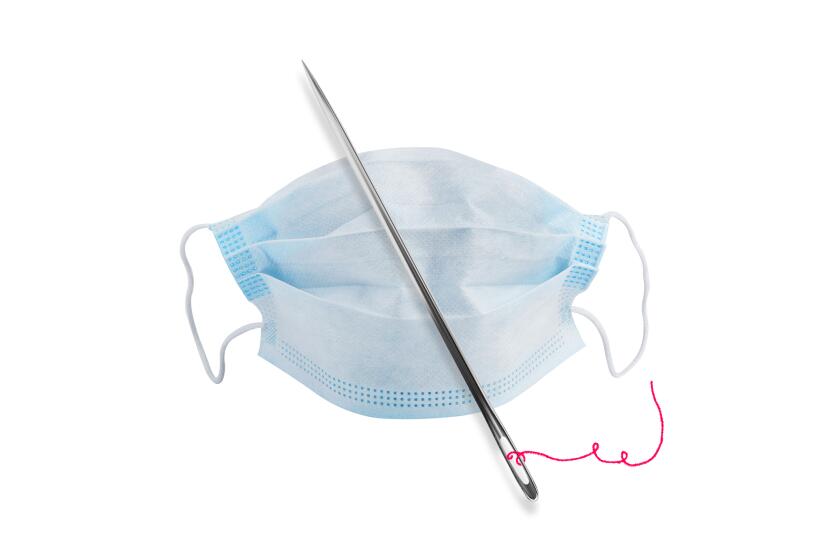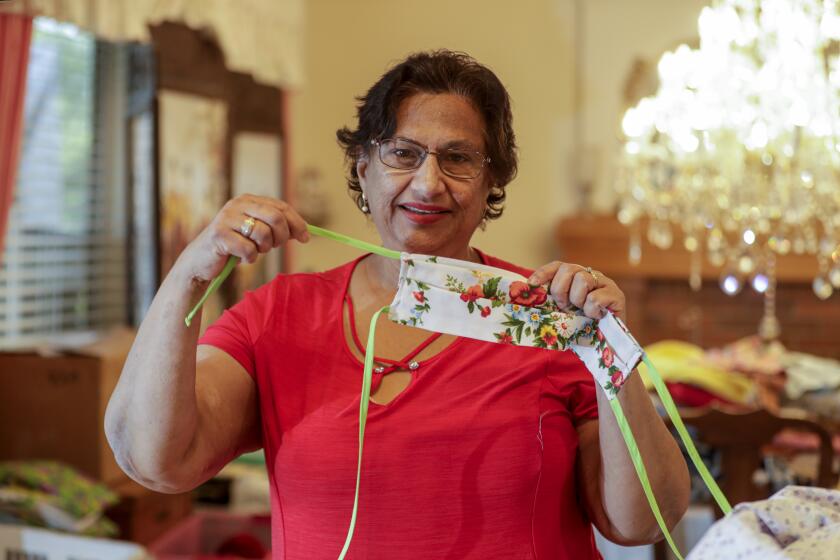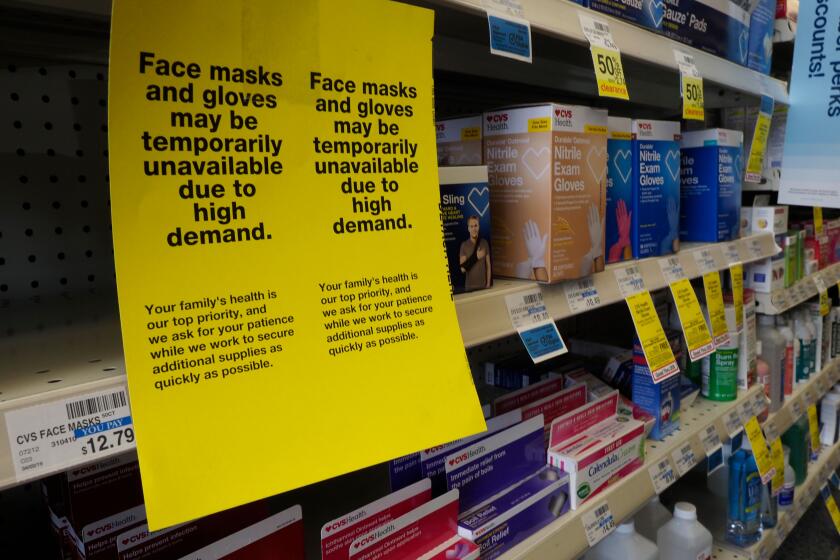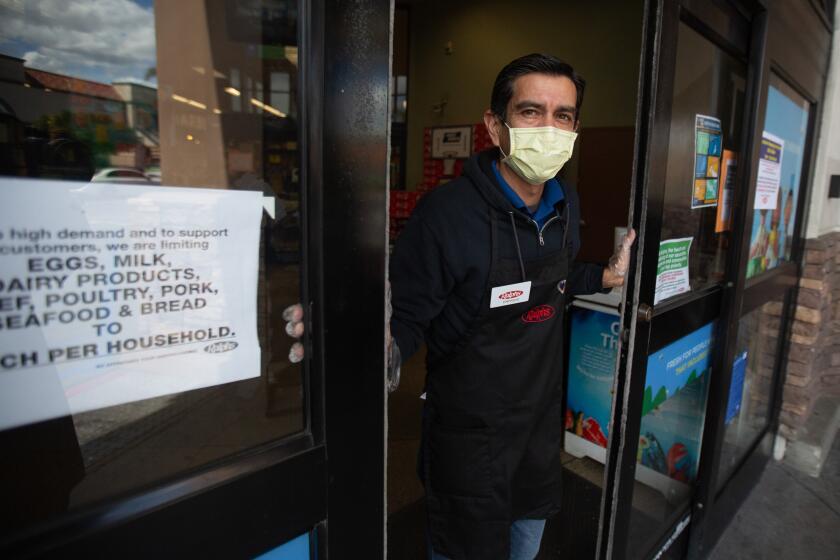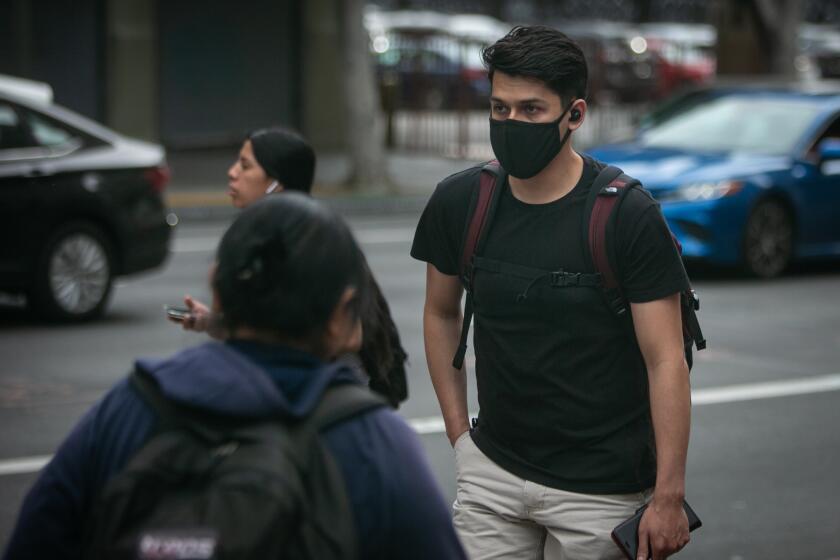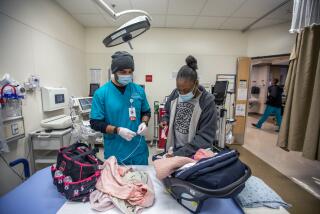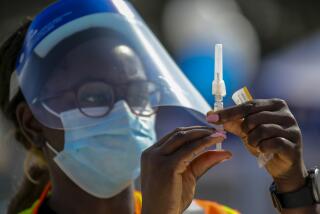Your guide to coronavirus face masks and coverings: How to do it right
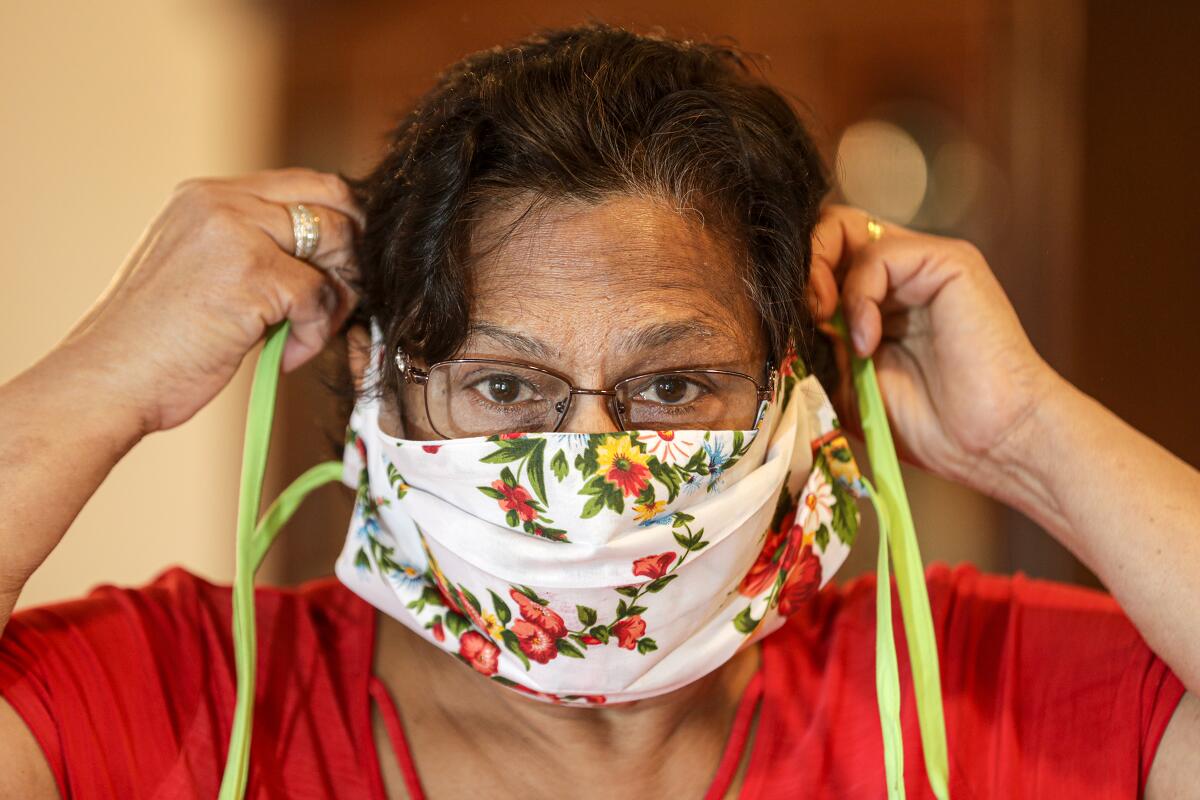
Wearing masks or other face coverings is now recommended as one way of slowing the spread of the coronavirus.
But the new suggestion has led to some confusion because, for weeks, federal authorities insisted masks were not necessary. And while the Centers for Disease Control and Prevention, along with many California officials, suggest wearing them while shopping or being out in public, President Trump says he won’t be covering his face.
DIY coronavirus mask instructions from crafters and doctors.
Here is a guide to coronavirus and mask usage:
What do we know about the effectiveness of masks?
Experts say masks alone are not particularly effective in preventing infection. They don’t cover the eyes, for instance, and a bit of coughed saliva that sprays into the eye can cause an infection.
Wearing a mask but still touching your face with unwashed, virus-contaminated hands can also lead to infection. People often find masks uncomfortable and touch them to make adjustments.
But even if they don’t provide full protection to the wearer, masks can protect others nearby by removing contaminated droplets from the air released by asymptomatic people when breathing or talking.
Research published by Cambridge University Press in 2013 found that homemade cloth masks “significantly” reduced the amount of potentially infectious droplets expelled by the wearer.
Dr. Otto Yang, a UCLA expert in infectious diseases, said he thought universal mask-wearing had helped keep the virus under control in places such as Singapore and Taiwan.
“My personal opinion is that that’s probably been an important thing in other countries flattening their curve,” he said. “If you go to Taiwan or Singapore, everyone’s got a mask on all the time. Healthy or not. Sick or not.”
‘We may be moving gently at this point toward the Asian culture,’ one health expert says of everyday mask-wearing.
What are some basic tips?
The California Department of Public Health has these guidelines for cloth masks:
- Face coverings can be made out of cloth, factory-made or hand-sewn, or improvised using bandannas, scarves, T-shirts, sweatshirts or towels.
- The material should cover both the nose and mouth.
- Be sure your mask is comfortable; you don’t want to have to keep adjusting the mask, because that means touching your face.
- Wash your hands, or use hand sanitizer, before and after touching your face or face coverings.
Face coverings and masks may help to stem the spread of the coronavirus. But how to keep them clean?
How do you keep your mask clean?
California health officials recommend frequently washing cloth face masks — ideally after each use, or at least daily. Place the coverings in a bag or bin until they can be washed with detergent and hot water and dried on a hot cycle (or at least washed with hot, soapy water).
If you have to wear the covering again before washing it, wash your hands immediately after putting it back on and avoid touching your face. And throw out any masks that no longer cover your nose and mouth, have stretched out or damaged straps, can’t stay on your face or have holes or tears in the fabric.
The coronavirus took their day jobs in Hollywood, so costumers turned to making masks to meet a shortage of protective clothing among medical workers.
How do you make your own mask?
It’s not that hard. The Times has a guide here as well as video.
Bibi Sheonarine, a 66-year-old real estate broker decided to start making cloth masks from her Upland home.
First, she measured her face — ear to ear, nose to lower chin. Then she measured her husband’s face. He’s 73. She cut rectangles out of a bolt of cream-colored corduroy that she’d planned to use to make clothes for war-ravaged Syrians. She stitched elastic bands to the ends — and voila. The mask was done.
“It took me 10 minutes,” she said. “I made a simple video tutorial so others could make them, even a child.”
By March 27, she’d made 459 of them. Some went to local hospitals, others to family members in New York. And she realized that just maybe she and her neighbors could make a dent in the mask shortage. So she took to Facebook and Nextdoor, recruiting other crafty volunteers.
Stores across Southern California see a surge in demand for masks, hand sanitizer, self-stable food and other supplies because of the coronavirus outbreak.
What should you not do?
State and local officials said people should not use medical or surgical masks, which are desperately needed by healthcare personnel.
Additionally, mask wearing is not a substitute for other key coronavirus guidance — such as handwashing and social distancing. Here are the basics:
- Wash your hands for at least 20 seconds with soap and water. If you’re working outside your home, wash your hands before, during and after your shift. Avoid touching your face.
- If you choose to wear gloves, wash your hands before and after wearing them, and use the same precautions you would if you weren’t wearing gloves — i.e., don’t touch a surface and then touch another person.
- Avoid close contact with others. That means no mass gatherings or any other meet-ups in places where people may congregate. If you absolutely must be out in public, maintain a 6-foot radius of personal space. Here’s more on how best to do it.
Face masks could help against the coronavirus, but they aren’t an excuse for leaving your home for nonessential business, health officials say.
What worries experts about masks?
“What’s the downside to asking people to put on masks or wrap their faces with a shawl?” said Dr. William Schaffner, professor of preventive medicine and infectious diseases at Vanderbilt University. “It may make some people think they’re bulletproof. Some bozo out there will say, ‘Let’s put on our bandannas and have a poker party tonight.’”
Summer Johnson McGee, dean of the University of New Haven’s School of Health Sciences, said there was still a lack of research on the effectiveness of using masks to slow the spread of the coronavirus. But she doesn’t see how wearing one can hurt.
“What do we have to lose?” she said. “Masks may prevent some transmission, which is better than not trying to prevent transmission at all.”
The CDC now recommends that the public wear cloth face masks while also urging that high-grade equipment be reserved for medical personnel.
Why has the guidance around masks been so confusing?
The CDC recommended face coverings Friday after insisting for weeks that healthy people did not need to wear masks in most circumstances.
“The transmission from individuals without symptoms is playing a more significant role in the spread of the virus than previously understood,” President Trump said Friday when announcing the new advice at a White House briefing. “So you don’t seem to have symptoms and it still gets transferred.”
Surgeon General Jerome Adams acknowledged that government advice about masks had been “confusing to the American people.”
Until now, the CDC has said that healthy people do not need a mask unless they are working in a healthcare setting or caring for an infected person. “The best available evidence” did not suggest that wearing a mask would do much to protect a healthy person from contracting COVID-19, Adams said.
What changed that thinking was a recognition that people were spreading the virus even when they seemed healthy.
For instance, a study published Wednesday in the CDC’s Morbidity and Mortality Weekly Report documented seven clusters of COVID-19 cases in Singapore that were fueled by infected people who showed no signs of illness.
One of those clusters began with two tourists from Wuhan, China, who visited a church when they arrived in Singapore on Jan. 19 and fell ill several days later. Three other people who attended the same church that day became sick over the next four to 15 days. One of those patients sat in the same seat as one of the tourists, according to closed-circuit camera footage of the church.
Now that it’s clear asymptomatic people are spreading the virus, U.S. health officials decided everyone should wear cloth face coverings in places such as grocery stores and pharmacies, Adams said.
The masks will “help people who do have the virus and do not know it” by limiting their ability to transmit it to others, he said.
Coronavirus: Garcetti urges residents to wear face coverings when shopping, doing essential tasks
Should wearing masks be mandatory?
It is in Riverside County.
The county’s public health officer on Saturday ordered all residents to cover their faces when leaving home, marking a dramatic escalation by county officials in their attempts to slow the spread of the novel coronavirus.
Dr. Cameron Kaiser said, despite previous pleas from county officials for residents to socially distance, cover their faces and stay home, “more and more” residents were getting infected with the virus, and “not everyone’s getting the message.”
“We change from saying that you should to saying that you must,” Kaiser said in a prepared statement published by the county.
Face coverings can include bandannas, scarves “or other clothing that does not have visible holes,” according to a prepared statement from the county.
But Riverside is an outlier. Both federal and state mask guidance is currently just a recommendation.

More to Read
Start your day right
Sign up for Essential California for news, features and recommendations from the L.A. Times and beyond in your inbox six days a week.
You may occasionally receive promotional content from the Los Angeles Times.
